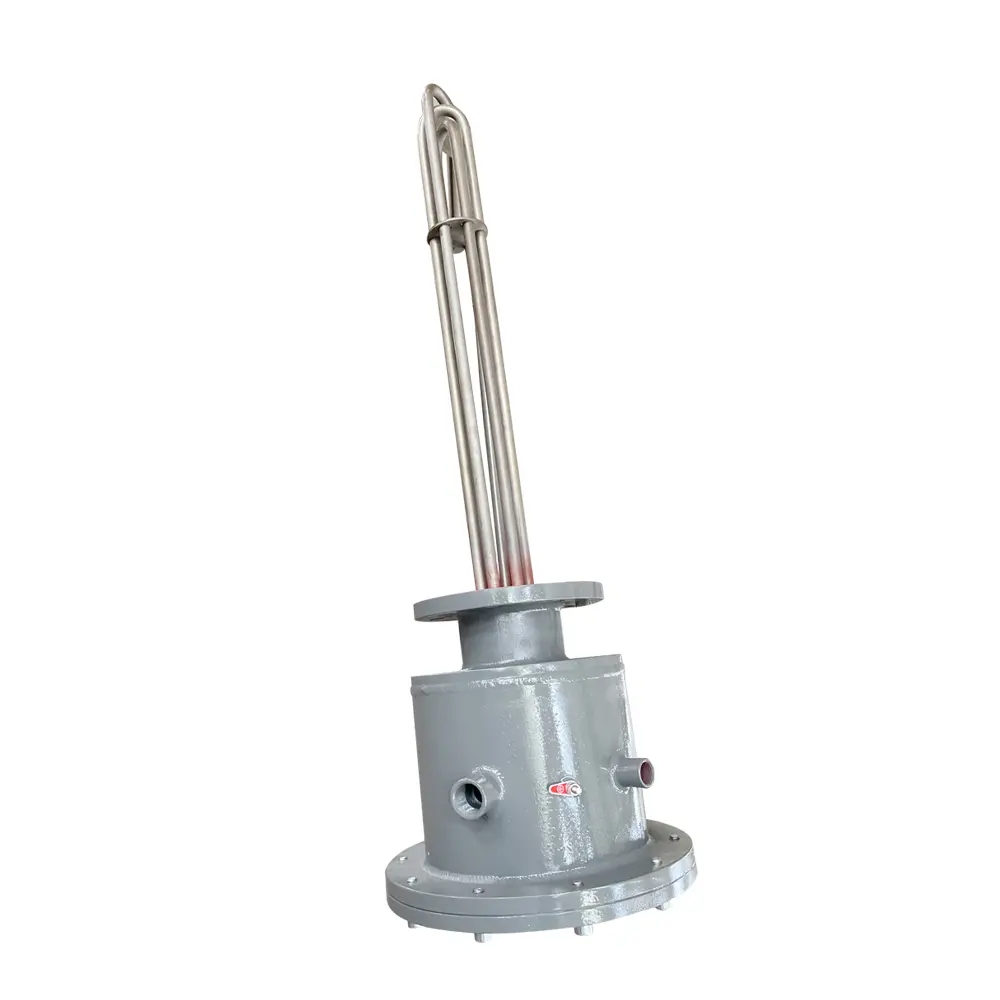Electric immersion heaters are widely used in both residential and industrial applications for heating liquids such as water, oil, chemicals, and food products. These heaters are known for their efficiency and durability, but like any electrical equipment, they require regular maintenance to ensure optimal performance, longevity, and safety. Proper daily maintenance not only prevents unexpected failures but also helps maintain energy efficiency and reduce operational costs.
1. Check for Leaks or Moisture Intrusion
One of the most critical aspects of daily maintenance is inspecting the heater for any signs of leakage or moisture ingress. Since immersion heaters operate submerged in liquid, a compromised seal can allow moisture into the electrical components, leading to short circuits or even electric shock hazards. Look for:
Water or condensation inside the terminal box
Corrosion around the flange or threaded connections
Discoloration or rust on the heater sheath
If any of these signs are present, the heater should be disconnected immediately and inspected by a qualified technician.
2. Monitor for Scale or Deposits Buildup
Depending on the type of liquid being heated—especially water—mineral deposits (such as calcium or lime scale) can accumulate on the surface of the heater. This buildup acts as an insulating layer, reducing heat transfer efficiency and causing the internal temperature of the heating element to rise, potentially leading to overheating and failure.
To prevent this:
Regularly inspect the heater surface for scale buildup
Clean the heater using mild descaling agents if necessary
Consider installing a water softener or filtration system if hard water is a persistent issue
In industrial environments, periodic chemical cleaning may be required to maintain optimal performance.
3. Ensure Proper Liquid Level Coverage
An immersion heater must always be fully submerged during operation. Running the heater dry—even briefly—can cause it to overheat and fail. Therefore, it's important to check that the liquid level covers the entire heating element before turning the system on.
For tanks or vessels without automatic level controls, consider implementing visual indicators or alarms to alert operators if the liquid level drops too low.
4. Inspect Electrical Connections
Electrical connections are crucial for safe and efficient operation. Over time, vibration, thermal expansion, and environmental factors can cause terminals to loosen or corrode. Daily checks should include:
Tightness of terminal screws
Signs of overheating (e.g., discoloration or melting)
Presence of dust or debris in the terminal box
Always ensure the power is turned off before inspecting or tightening any connections.
5. Monitor Temperature and Control Systems
Immersion heaters often come equipped with thermostats or control systems to regulate temperature. It’s essential to verify that these systems are functioning correctly:
Check if the heater turns off when reaching the set temperature
Ensure there are no erratic fluctuations in output
Calibrate the thermostat periodically if needed
A malfunctioning control system can lead to overheating, inefficient operation, or damage to the tank or liquid contents.
6. Listen for Unusual Noises
Unusual sounds such as buzzing, humming, or crackling could indicate issues such as loose components, arcing, or internal insulation breakdown. If abnormal noises are heard during operation, the heater should be shut down and inspected immediately.
7. Keep the Surrounding Area Clean and Dry
Maintaining a clean and dry environment around the heater helps prevent corrosion, contamination, and electrical hazards. Wipe down the exterior housing and ensure the area around the terminal box remains free from dirt, oil, or moisture.
8. Track Operating Hours and Plan for Replacement
While immersion heaters are built to last, they do have a finite lifespan depending on usage intensity and operating conditions. Keeping a log of operating hours and past maintenance records helps anticipate when replacement parts or a full unit upgrade might be necessary.
Daily maintenance of an electric immersion heater involves a combination of visual inspections, functional checks, and proactive cleaning or adjustments. By paying attention to key areas such as leaks, scale buildup, liquid levels, electrical connections, and temperature controls, users can significantly extend the life of the heater while ensuring safe and efficient operation.
Regular maintenance not only protects the heater itself but also safeguards the overall system it serves—whether it's a home water heater or an industrial process tank. For best results, always follow the manufacturer’s guidelines and consult a professional if you're unsure about any aspect of inspection or repair.


 English
English русский
русский Français
Français Español
Español عربى
عربى
